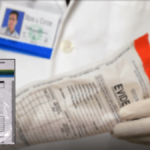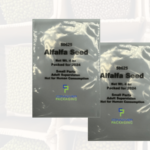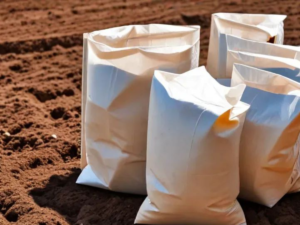Breathable Evidence Bags for Specific Types of Evidence

In the exacting realm of forensic science, each fragment of evidence can lead to a revelatory conclusion. The meticulous collection, preservation, and transportation of this evidence can bridge the gap between mysteries and their resolutions. One paramount tool assisting professionals in this task is Breathable Evidence Bags. Specifically designed for certain types of evidence, these bags offer distinct advantages that can’t be understated in the evidence collection process.
What are Breathable Evidence Bags
Breathable evidence bags are specialized storage containers used in the field of forensic science and law enforcement for the preservation and transportation of certain types of evidence, especially those that might contain moisture. Unlike traditional plastic evidence bags that are airtight, breathable evidence bags allow for air circulation.
The primary purpose of these bags is to prevent the accumulation of moisture which can lead to the growth of mold, bacteria, or other contaminants that might compromise the integrity of the evidence. For instance, if a piece of clothing or fabric that is damp or wet (due to sweat, rain, blood, or other fluids) is stored in a regular airtight bag, it could become a breeding ground for mold or bacteria. This microbial growth can degrade the evidence and may obscure or destroy vital forensic information.
Breathable evidence bags, with their ability to allow moisture to evaporate while still protecting the contents from external contaminants, ensure that the evidence remains in its original state until it can be analyzed. They are crucial for maintaining the authenticity of evidence, especially in cases where the evidence will be stored for extended periods before examination.
Understanding the Concept: Breathability in Evidence Collection
Before diving deeper into the nuances of these bags, it’s essential to understand why breathability is so crucial. For certain evidence types, especially those with inherent moisture, breathability is not a luxury; it’s a necessity.
Combatting Mold and Bacteria: Wet or damp evidence, such as items of clothing, can easily become compromised in sealed environments. This makes them susceptible to mold and bacteria. Breathable Evidence Bags counteract this by facilitating air circulation, thereby limiting microbial growth and maintaining the evidence’s original state.
Upholding Evidence Authenticity: The bags’ breathable nature ensures moisture doesn’t accumulate. This is imperative for ensuring the evidence remains unaltered, ready for precise laboratory evaluations.
Zeroing In: Types of Evidence Best Suited for Breathable Bags
While not all evidence requires the specifics of breathable bags, some items distinctly benefit from their unique features.
- Clothing: Clothing, especially when damp, is probably the most frequent item stored in Breathable Evidence Bags. Whether moistened by natural elements, bodily fluids, or other sources, breathable bags enable these items to dry naturally. This methodical drying process ensures the preservation of any latent evidence.
- Biological Samples: Think of biological samples like plant remnants or perishables. These may deteriorate rapidly in airtight bags. Breathable bags serve as their guardian, ensuring they remain as close to their original state as possible until examined.
- Footwear: Just like clothing, shoes, especially those found in wet conditions, benefit from breathable storage. Such bags ensure that trace evidence, often found on footwear, remains intact.
Contrasting Breathable Evidence Bags with Traditional Police Evidence Bags
Traditional police evidence bags have long been the staple in evidence collection. However, Breathable Evidence Bags have brought about a nuanced approach to the practice.
- Material Make-up: The common police evidence bags are usually crafted from plastic or similar impermeable materials. In stark contrast, Breathable Evidence Bags champion ventilation.
- Adaptability: While the traditional bags are the go-to for a broad spectrum of evidence types, breathable bags have a niche. They’re custom-made for specific evidence types that thrive in a ventilated environment.
- Assured Protection: Both bag types provide robust protection against external tampering, leaving clear indications of any unauthorized breaches. However, breathable bags have the added advantage of safeguarding against moisture-associated degradation.
Guidance on Selection: Picking the Right Bag for Your Evidence Collection
The essence of successful evidence collection hinges on using the apt tools. When you’re at the crossroads of choosing between different evidence collection bags, keep these pointers in mind:
- Evidence Nature: Always allow the type of evidence to guide your bag choice. If it can degrade from moisture or requires aeration, breathable bags are your best bet.
- Storage Span: Ponder over how long the evidence will be stored. For prolonged storage, especially of damp items, breathable bags stand out as the most viable option.
- Sourcing Quality: Always be discerning about where you source your evidence bags. Reputable companies, like Connover Packaging, are synonymous with quality, meeting the high standards demanded by forensic experts.
Additional Considerations
- Training: Proper training on the use of breathable evidence bags ensures that they are utilized to their full potential. Law enforcement agencies should regularly update their training protocols to incorporate the latest best practices.
- Innovation: The forensic field is always evolving. Stay informed about advancements in evidence collection tools and techniques. Breathable Evidence Bags are just one example of how innovation can enhance the accuracy and efficiency of evidence collection.
Conclusion
Breathable Evidence Bags are more than just a specialized tool in the realm of forensic science; they’re an embodiment of the profession’s dedication to accuracy, innovation, and justice. By understanding their unique features and applications, forensic professionals can elevate their evidence collection methods, ensuring that each piece of evidence is handled with the utmost care and precision. The dance of justice is intricate, and every step, every tool, and every method counts.
Share:
Get A Quick Quote
Social Media
Most Popular

How to Choose the Right Bullet Casing Evidence Bags

Choosing Sustainability: Biodegradable Bags for Soil

A Comprehensive Guide to Seed Packaging Methods
Categories
Tags
Related Posts
RFID vs. Barcodes for Evidence Tracking: A Side-by-Side Analysis
Automated identification technology (AIT), such as barcoding and radio frequency identification (RFID), is increasingly used by forensic labs and law enforcement to track and manage

How to Choose the Right Bullet Casing Evidence Bags
Bullet casings are one of the most common pieces of evidence collected from crime scenes, and their preservation is crucial for investigations. Choosing the right

Choosing Sustainability: Biodegradable Bags for Soil
In our quest for a greener planet, every little choice matters. And one choice that’s gaining traction in recent years is opting for biodegradable bags
